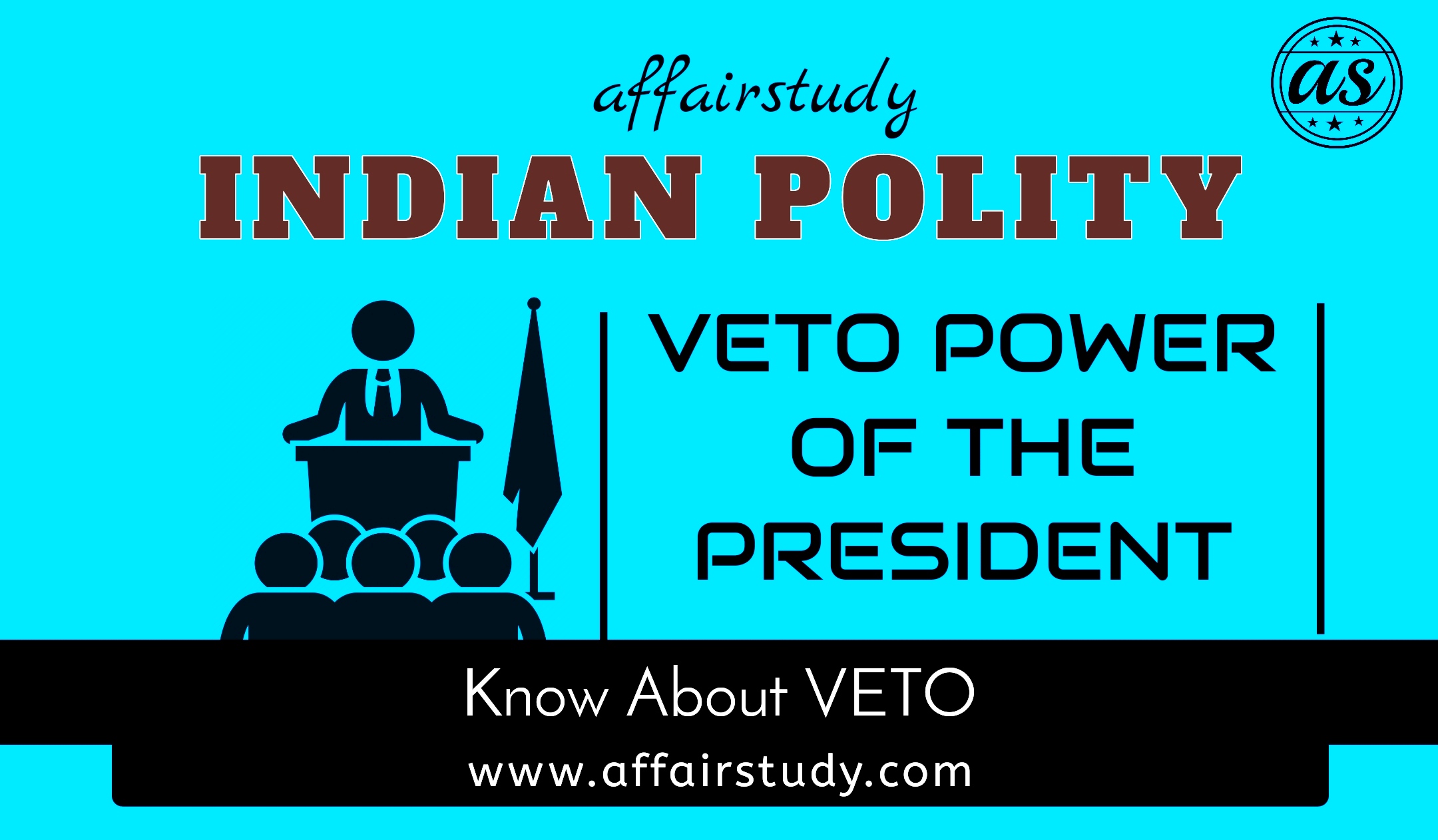THE VETO POWER OF THE PRESIDENT
Indian Polity | Veto Powers
 |
| The Veto Power of the President |
The Constitution of India has adopted the parliamentary form of the government and the Union Executive is responsible to the legislature. The Union Executive consists of the President, the Vice President, the Prime Minister with his council of ministers and the Attorney General.
On this page, we will know about the veto power of the President.
The Veto Power of the President | Polity
What is Veto?
- 'Veto' is a Latin word that connotes 'forbid'. In the constitutional parley, the power or right vested in one branch of a government to cancel or postpone the decisions, enactments, etc.
Veto Powers of the President:
In India, The President enjoys three veto powers which he/she can use to deny the execution of an action recommended by Parliament.
The Veto Powers of the President are as follows:
The President has three veto powers - Absolute Veto, Suspension Veto and Pocket Veto.
When a Bill other than a Money Bill is passed by Parliament, the President may decline to give assent to the Bill altogether. However, in practice there runs a risk as the President may attract impeachment for ignoring the advice of the Council of Ministers and that of Parliament whose support is crucial for the President's survival.
Pocket Veto:
This veto power is used when the President feels that the party in power is likely to face disability and may be disinclined to assent to a Bill passed and neither communicate it to the Council of Ministers nor send it back for Parliament for reconsideration. The Bill lies in President's office for an indefinite period. In case of a Money Bill, the President may assent to it or decline to do so but cannot send it back to Parliament. In the case of Constitutional Amendment Bills, the President is bound to his/her assent to it.
Suspensive Veto:
When a Bill other than a Money Bill is passed by Parliament and the President may resend the Bill to Parliament for further consideration with a message to amend certain provisions of a Bill. However, if the Parliament passes it again with or without amendment, the President is bound to give assent to it.
* Important Note:
- Zail Singh, the President of India from 1982 till 1987, exercised a pocket veto to prevent the Indian Post Office (Amendment) Bill from becoming law.
This Page Contains:
the veto power of the president, explain the veto power of the president, describe the veto power of the president, 3 veto power of the president, president veto power in India, what is the veto power of the president of India, president veto power upsc, president veto power India, types of veto power of president, three veto powers of the president
Read Also...








0 Comments
I hope you liked the Post. Share it with your friends and if you have any suggestion, feel free to enter your comment in the comment box.